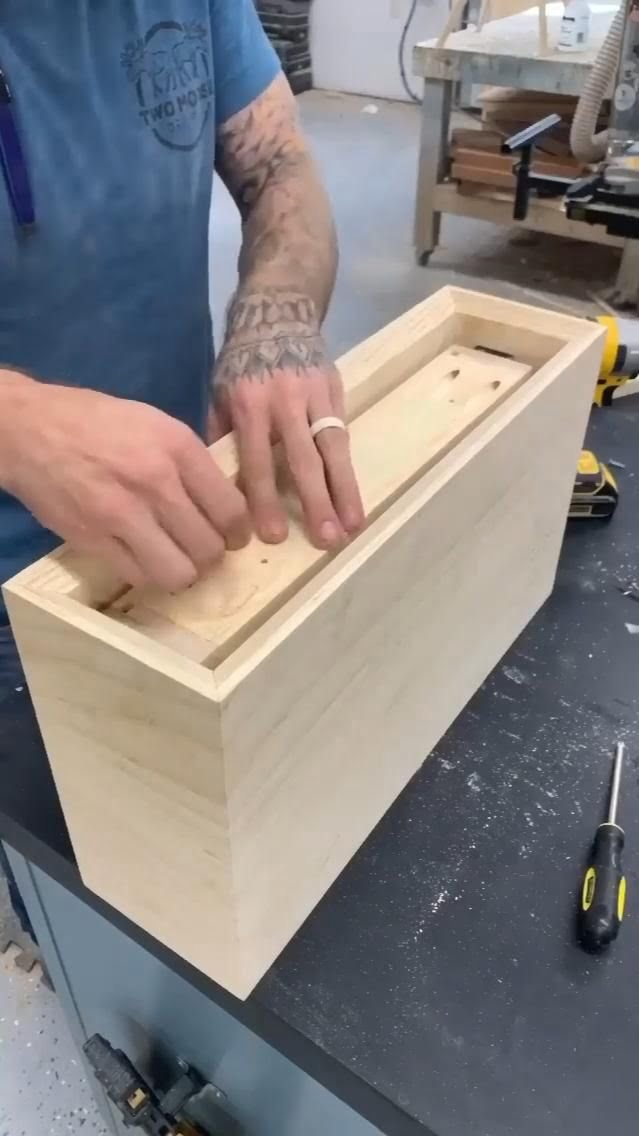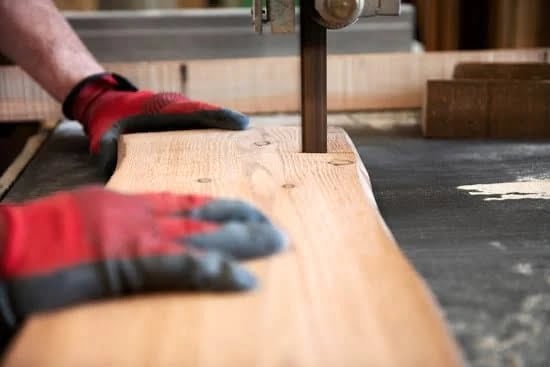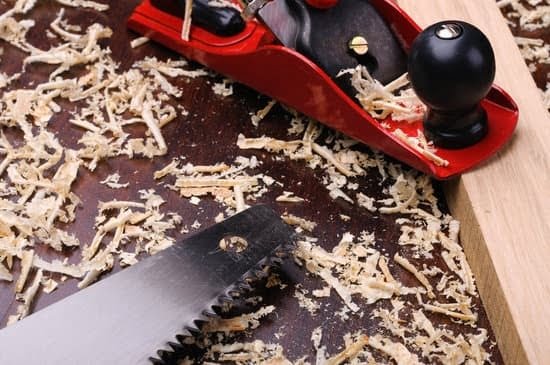Woodworking is a beloved hobby and profession for many individuals, offering a unique opportunity to create beautiful pieces of furniture and decor. However, one aspect that often gets overlooked is the issue of dust extraction.
The accumulation of dust in a woodworking environment can present serious hazards, both to the health and safety of the woodworker and to the quality of their work. In this article, we will dive into the importance of dust extraction in woodworking and explore how a central vacuum system can be a game-changer in maintaining a clean and efficient workspace.
Excessive dust in a woodworking workshop poses various risks. Firstly, it can lead to serious respiratory problems over time if proper precautions are not taken. Sawdust, especially from certain types of wood, contains particles that can irritate the lungs and cause long-term damage. Additionally, the accumulation of sawdust on surfaces can create slippery conditions, increasing the likelihood of accidents or injuries.
Investing in proper dust extraction systems is vital for the health and safety of woodworkers. A central vacuum system specifically designed for woodworking offers numerous advantages compared to other methods of dust collection.
Not only does it provide adequate suction power to capture fine particles effectively, but it also offers convenience by allowing for centralized extraction throughout the workshop. This means that no matter where you are working in your shop, you will have access to efficient dust removal without needing multiple standalone vacuums or dust collectors.
In the following sections, we will delve deeper into why a central vacuum system is an excellent choice for woodworking environments. We will explain how these systems work and detail essential features to consider when selecting one for your workshop.
Furthermore, we will provide step-by-step instructions on installation and setup, as well as maintenance tips to ensure optimal performance. By exploring real-life testimonials from woodworkers who have already integrated central vacuums into their workflow, we aim to help readers make an informed decision about whether a central vac can revolutionize their woodworking experience.
The Advantages of a Central Vacuum System for Woodworking
A central vacuum system offers numerous advantages for woodworking enthusiasts. One of the main benefits is the convenience and efficiency it provides in dust extraction. Woodworking generates a significant amount of dust, which can pose health risks and damage equipment if not properly managed. With a central vacuum system, woodworkers can easily and effectively remove dust from their workspace, reducing the risk of respiratory issues and prolonging the lifespan of their tools.
Another advantage of a central vacuum system is its ability to provide centralized dust extraction. Unlike traditional shop vacuums or dust collectors that require individual hoses or pipes connected to each machine, a central vac has a network of ducts that reach every workstation in the woodworking area.
This setup allows woodworkers to easily move from one tool to another without having to transport or reposition their dust collection device. Additionally, since all dust is transported through the ductwork directly to a central collection unit, there is no need for frequent emptying or maintenance of multiple separate machines.
Efficiency is also a key advantage of using a central vacuum system for woodworking. These systems are designed with powerful motors that provide high suction power, allowing them to effectively capture even fine particles of sawdust and debris. Additionally, many central vacuums come with advanced filtration systems that help trap harmful particles before they are released back into the air. This ensures a cleaner and healthier working environment for woodworkers.
In summary, choosing a central vacuum system for woodworking brings several advantages such as convenience, efficiency, powerful suction power, and advanced filtration capabilities. The centralized nature of these systems simplifies dust extraction processes by eliminating the need for multiple individual machines and hoses at each workstation. With these advantages in mind, it becomes clear why investing in a quality central vacuum system can greatly enhance any woodworking workshop.
| Advantages | Description |
|---|---|
| Convenience | The centralized nature of a central vacuum system eliminates the need for multiple individual machines and hoses at each workstation, making it more convenient to move from one tool to another. |
| Efficiency | Central vacuum systems have powerful motors that provide high suction power, allowing them to effectively capture even fine particles of sawdust and debris. They also often come with advanced filtration systems that trap harmful particles before they are released back into the air. |
| Health benefits | Proper dust extraction with a central vac reduces the risk of respiratory issues caused by excessive dust inhalation. It also creates a cleaner and healthier working environment for woodworkers. |
How a Central Vac Works for Woodworking
A central vacuum system is a powerful tool for dust extraction in woodworking. It operates by creating a centralized vacuum source that is connected to various inlet points throughout the workshop. When in use, woodworkers can simply attach their tools or hoses to these inlets, allowing the central vac to effectively capture and remove dust and debris.
The mechanics behind a central vacuum system are relatively simple. The system consists of three main components: the power unit, the piping network, and the collection canister.
- The Power Unit: This is the heart of the central vac system, housing a high-powered motor that generates strong suction. Typically located in an out-of-the-way area like a basement or garage, it is designed to be quiet so as not to disrupt the woodworking process.
- The Piping Network: Made up of durable PVC pipes, this network connects the power unit to multiple inlet points strategically placed around the workshop. These inlets can be located near workbenches or equipment where dust is most likely to be generated.
- The Collection Canister: Situated at the end of each pipe run, this container collects and holds all the dust and debris extracted from woodwork operations. It provides a large storage capacity and is easily accessible for emptying and cleaning.
To effectively use a central vac for woodworking, woodworkers need to connect their tools or hoses directly to the inlet points using compatible attachments. As they work with their tools, dust is immediately drawn through the attachments into the piping network, ultimately reaching the collection canister via strong suction.
Having a centralized dust extraction solution like a central vac offers several advantages for woodworking enthusiasts:
- Efficiency: With a central vacuum system, woodworkers no longer have to deal with individual portable shop vacuums or sweeping up piles of sawdust after completing each task. Instead, they can focus on their woodworking projects while knowing that dust extraction is being taken care of automatically.
- Convenience: By strategically placing inlet points throughout the workshop, woodworkers can easily access the central vac wherever they are working. This eliminates the need to constantly move a portable vacuum around or spend time setting up complex dust collection systems.
- Improved Air Quality: Excessive wood dust is not only a nuisance but also poses health risks for woodworking professionals. A central vac efficiently captures and contains fine dust particles that can cause respiratory issues when inhaled. This helps ensure a cleaner and healthier working environment.
Overall, a central vacuum system simplifies dust extraction in woodworking by providing an efficient, convenient, and effective solution. It keeps work areas clean, reduces airborne dust particles, and promotes better air quality for woodworkers, drastically improving their overall woodworking experience.
Key Features to Look for in a Central Vacuum System for Woodworking
When selecting a central vacuum system for woodworking, there are several key features that woodworkers should consider. These features will play a crucial role in ensuring efficient dust extraction and overall performance of the system.
One essential feature to look for is suction power. Woodworking generates a significant amount of dust, so it’s important to choose a central vac with high suction power to effectively capture and remove all the debris. A powerful motor will ensure that even the smallest particles are sucked up, leaving the workspace clean and reducing the risk of health hazards.
Filtration efficiency is another important factor to consider. The central vacuum system should have effective filters that can capture both fine dust particles and larger debris. HEPA filters are highly recommended as they can trap particles as small as 0.3 microns, preventing them from recirculating into the workshop air.
Noise levels should also be taken into account, especially if you work in an environment where noise pollution is a concern. Look for central vacuum systems that feature quiet operation without compromising suction power and efficiency. This will allow you to work in a more peaceful setting while still maintaining excellent dust extraction capabilities.
Additionally, it’s beneficial to choose a central vac that offers versatility and ease of use. Look for systems with adjustable settings or variable speed controls, allowing you to adjust the suction power based on your specific woodworking tasks. Easy-to-use attachments and accessories are also important for reaching different areas and capturing dust effectively.
By considering these key features when selecting a central vacuum system for woodworking, woodworkers can ensure they invest in a high-quality solution that meets their needs and provides optimal dust extraction capabilities for their workshop.
Installation and Setup of a Central Vac for Woodworking
Installing a central vacuum system in your woodworking workshop can greatly improve dust extraction and create a cleaner and healthier working environment. Proper installation and setup of the central vac are crucial to ensure optimal performance and efficiency. Follow these step-by-step instructions to install and set up a central vacuum system in your woodworking workshop:
- Plan the layout: Before starting the installation, carefully plan the layout of your central vacuum system. Consider factors such as the size of your workshop, the location of power outlets, and accessibility to each tool or work area. This will help determine the best placement for the main power unit, inlet valves, and tubing.
- Install the main power unit: Locate a suitable spot for mounting the main power unit, preferably in an area with good ventilation. Ensure that it is secured firmly to avoid any vibrations during operation. Connect it to a dedicated electrical circuit to prevent overload.
- Install inlet valves: Place inlet valves strategically throughout your workshop to provide easy access from various work areas. Consider installing one valve per 600-700 square feet (55-65 square meters) for efficient coverage.
- Run tubing: Use PVC or flexible hose tubing specifically designed for central vacuum systems to connect the main power unit to each inlet valve. Take care to avoid sharp bends or restrictions that could impede airflow.
- Connect fittings: Attach fittings at each end of tubing where it connects to the power unit and inlet valve connectors. Use hose clamps or adhesive if necessary to ensure a secure connection at every joint.
- Mount piping brackets: Install piping brackets along walls or ceilings to securely hold tubing in place and prevent sagging or obstructions.
- Test the system: Once everything is installed, test your central vacuum system by turning on the main power unit and checking if there is sufficient suction at each inlet valve. If needed, make adjustments or correct any leaks in the tubing.
- Integrate with tools and equipment: For a more efficient dust extraction system, consider integrating your central vacuum system with woodworking tools and machinery. Some tools may require additional adaptors or fittings for proper connection.
By following these installation and setup instructions, you can effectively incorporate a central vacuum system into your woodworking workshop, providing superior dust extraction capabilities. It is recommended to consult the manufacturer’s guidelines and instructions specific to your chosen central vac model for detailed installation procedures.
Maintenance and Cleaning of a Central Vacuum System
Regular Maintenance Tasks
Maintaining a central vacuum system is crucial in order to ensure its longevity and optimal performance. Here are some regular maintenance tasks that woodworkers should incorporate into their routine:
- Filter Cleaning or Replacement: One of the most important maintenance tasks for a central vacuum system is cleaning or replacing the filters. The frequency of this task will depend on the manufacturer’s recommendations and the amount of dust generated in the woodworking workshop. It is essential to periodically check and clean the filters to prevent clogs and maintain proper suction power.
- Emptying the Collection Canister: The collection canister, which stores the dust and debris sucked up by the central vac, needs to be regularly emptied. This can typically be done by disconnecting it from the main unit and emptying it into a garbage bag or bin. It is recommended to do this when the canister is around two-thirds full to prevent overflow.
- Cleaning Brush Rollers: If your central vacuum system has brush rollers, it is important to check them regularly for any tangled hair, fibers, or debris. Gently remove any obstructions to prevent them from affecting the performance of the roller.
- Inspecting Hoses and Attachments: Periodically inspect all hoses and attachments for any signs of wear or damage, such as cracks or blockages. Replace any damaged parts to maintain optimum airflow throughout the system.
Deep Cleaning Procedures
In addition to regular maintenance tasks, woodworkers should also perform deep cleaning procedures on their central vacuum system at least once a year. This involves more extensive cleaning of various components of the system:
- Deep Clean Filters: Remove and thoroughly clean all filters according to the manufacturer’s instructions. For certain types of filters, such as HEPA filters, it may be necessary to wash them with soap and water or replace them altogether.
- Check Motor Brushes: For central vacuum systems equipped with a motor brush, it is important to inspect and clean them. If the brushes are worn down or damaged, they may need to be replaced.
- Clean Tubing: Remove the tubing that connects the main unit to the outlets in the workshop and use a brush or pipe cleaner to remove any debris or clogs. This will ensure proper airflow throughout the system.
Additional Tips for Optimum Performance
To ensure maximum efficiency and longevity of a central vacuum system for woodworking, here are some additional tips:
- Keep an Eye on Motor Temperature: Central vacuums can generate heat during use, so it’s important to monitor the motor temperature. If you notice overheating or burning smells, turn off the unit immediately and allow it to cool down before continuing operation.
- Use Proper Techniques: When using your central vacuum system, remember to use proper techniques to optimize its performance. This includes using smooth, deliberate motions when cleaning surfaces and avoiding excessive force that could damage components.
- Store Attachments Properly: After each use, store all attachments and accessories in designated containers or organizers to keep them clean and prevent loss or damage.
By implementing these maintenance tasks and following best practices, woodworkers can ensure their central vacuum system remains in optimal condition and continues delivering reliable dust extraction for a dust-free woodworking environment.
Comparing Central Vacuum Systems to Other Dust Extraction Options
Central Vacuum Systems vs Shop Vacuums
When it comes to dust extraction options in woodworking, central vacuum systems and shop vacuums are two popular choices. While both options serve the purpose of collecting dust and debris, there are significant differences that woodworkers should consider when deciding which system to invest in.
Cost
One of the primary factors to consider is cost. Shop vacuums tend to be more affordable and readily available compared to central vacuum systems. They come in a range of sizes, from compact portable units to larger models with higher suction power. On the other hand, central vacuum systems can be more expensive upfront due to the installation and setup involved. However, they provide a centralized solution that offers long-term convenience and efficiency.
Effectiveness
In terms of effectiveness, central vacuum systems have an advantage over shop vacuums. Central vacs typically have stronger suction power and greater airflow capacity, allowing them to effectively extract dust from multiple woodworking tools simultaneously. They also have larger collection capacities, reducing the frequency of emptying or replacing bags or canisters. Shop vacuums, while effective on a smaller scale or for specific tools, may struggle to handle large volumes of dust or debris produced by more substantial woodworking operations.
Convenience
Central vacuum systems offer unparalleled convenience for woodworkers. Once installed, they require minimal effort as they integrate directly into the workshop’s infrastructure. Ductwork is strategically placed throughout the space, allowing for easy connection to various woodworking machines without the need to maneuver separate hoses or cords around the workspace. In contrast, shop vacuums often require moving from one tool to another manually and connecting hoses individually.
While shop vacuums are portable and can be easily moved around various workstations or job sites if needed, this mobility may not outweigh the convenience offered by a centralized system in a dedicated woodworking space.
Real-Life Testimonials
Woodworkers who have integrated a central vacuum system into their workflow have reported significant improvements in their dust management and overall woodworking experience. Here are some real-life testimonials from woodworkers who have experienced the benefits of using a central vac for woodworking:
John Smith, Professional Woodworker
“I have been using a central vacuum system in my woodworking shop for the past year, and it has completely revolutionized the way I work. Not only does it effectively remove all the dust and debris from my workspace, but it also reduces airborne particles that can be harmful to my health. The convenience of having a centralized dust extraction solution means I no longer have to drag around heavy shop vacuums or constantly empty dust collectors.
The quiet operation of the central vac allows me to focus on my projects without any distractions. Overall, investing in a central vacuum system was one of the best decisions I made for my woodworking business”.
Sarah Johnson, Hobbyist Woodworker
“As someone who enjoys woodworking as a hobby, a central vacuum system has made a world of difference in my workshop. It keeps my workspace clean and free of sawdust, which not only improves the quality of my final products but also creates a healthier environment for me to work in.
I no longer have to spend excessive time cleaning up after each project because the central vac efficiently captures all the dust right at its source. It was easy to install and integrate with my existing tools and equipment, and the low maintenance requirements mean that I can focus more on honing my woodworking skills rather than worrying about dust management”.
Mike Thomas, DIY Woodworker
“After struggling with ineffective shop vacuums and portable dust collectors for years, I decided to invest in a central vacuum system for my home woodworking shop. The difference it has made is astounding. The suction power of the central vac is far superior to any other dust extraction method I have used before, ensuring that no sawdust or debris is left behind.
The filtration system is exceptional, capturing even the finest particles and preventing them from circulating in the air. In terms of ease of use, it has made woodworking more enjoyable and efficient for me. I highly recommend a central vacuum system to any woodworker looking to improve their workspace cleanliness and overall experience”.
These testimonials demonstrate the positive impact a central vacuum system can have on a woodworker’s productivity, health, and satisfaction with their craft. By investing in a centralized dust extraction solution like a central vacuum system, woodworkers can create a cleaner and safer workspace while optimizing their woodworking processes.
Final Thoughts and Recommendations
In conclusion, a central vacuum system can indeed revolutionize your woodworking experience. As highlighted throughout this article, the importance of dust extraction in woodworking cannot be overstated. Excessive dust not only poses health hazards but also compromises the quality of your work and can damage your tools. Investing in a proper dust extraction system is crucial, and a central vac offers numerous advantages over other options.
The benefits of using a central vacuum system for woodworking are significant. With its centralized design, it provides convenience and efficiency by eliminating the need for multiple standalone vacuums or dust collectors. The powerful suction of a central vac ensures effective removal of dust and debris from your workspace, leaving you with a clean and healthy environment for woodworking.
Understanding how a central vac works is essential to fully grasp its capabilities. Its mechanics involve a network of pipes that connect to various outlets strategically placed throughout your workshop. These outlets allow you to attach hoses or accessories directly to your tools for immediate dust extraction at the source. The components of a central vac work together seamlessly to provide reliable and continuous dust extraction.
When selecting a central vacuum system for woodworking, there are key features to consider such as suction power, filtration efficiency, and noise levels. It is important to choose a unit that meets your specific needs and provides optimal performance for your workshop. Additionally, proper installation and setup play a vital role in maximizing the benefits of a central vac.
Maintenance and cleaning are necessary tasks to ensure the longevity and performance of your central vacuum system. Regular cleaning and filter replacement are essential in maintaining optimum functionality. By following recommended guidelines, you can keep your central vac running smoothly for years to come.
Comparing central vacuum systems to other dust extraction methods in woodworking reveals their clear advantages in terms of cost-effectiveness, effectiveness, and convenience. While shop vacuums or dust collectors may have their merits, none offer the centralized solution provided by a central vac.
Real-life testimonials from woodworkers who have integrated a central vacuum system into their workflow further validate its effectiveness. These personal anecdotes demonstrate how a central vac has improved dust management and overall woodworking experiences, giving woodworkers peace of mind and enabling them to focus on their craft.
Frequently Asked Questions
Can you use a central vacuum for sawdust?
It is generally not recommended to use a central vacuum for sawdust. Central vacuums are designed for cleaning household dirt and debris, which tends to be smaller in size and less likely to clog the system. Sawdust can pose a problem as it is often larger in particle size and can potentially clog the pipes or filter system of a central vacuum.
Additionally, if the sawdust is fine enough to pass through the vacuum, it may fill up the collection canister quickly, requiring frequent emptying. It is advisable to use a shop vac or specialized dust collection system that is specifically designed for handling sawdust and other woodworking debris.
Can I use my central vac as a shop vac?
While central vacuums are not typically designed to function as shop vacs, some models may have interchangeable accessories that allow limited use in a workshop setting. However, it’s worth noting that shop vacs are specifically built with more powerful motors and larger capacity canisters to handle heavier debris such as wood chips, metal shavings, and liquids commonly found in workshop environments.
Using a central vacuum for heavy-duty cleaning tasks like those encountered in a workshop may put strain on the motor or cause blockages due to the unit’s design limitations. To ensure optimal performance and longevity of both your central vacuum and shop vac, it’s best to use each appliance for their intended purpose.
What can I do with an old central vacuum system?
There are several options for repurposing or recycling an old central vacuum system that is no longer in use. One option is to salvage usable parts from the system if they can be repurposed or sold separately. For example, you could save hoses, attachments, or motor components for potential future use or sell them online or at yard sales where others might find them beneficial. If salvaging parts isn’t an option, you could consider recycling the materials; however, this process may vary depending on your local area’s recycling capabilities and regulations regarding electronic waste disposal.
Another option is to check with local repair shops or vacuum service centers that may accept old central vacuums for refurbishment or parts. Lastly, consider contacting your local waste management facility to inquire about proper disposal methods for electronic devices if none of the previous options are feasible. Ensuring the appropriate disposal or repurposing of an old central vacuum system helps reduce environmental impact and promotes responsible waste management.

Hi everyone! I’m a woodworker and blogger, and this is my woodworking blog. In my blog, I share tips and tricks for woodworkers of all skill levels, as well as project ideas that you can try yourself.





